“A much quoted bromide defines ‘management’ as the skill of getting people to do something that you want them to do because you want them to do it and ‘leadership as the art of getting people to do something you want them to do because they want to do it.”- Sal F. Marino, “The Difference Between Managing and Leading”, Industry Week, June 17, 1999
I think one of the most famous leaders of all times, and one to which most pilots can relate, is Capt. James T. Kirk, of the USS Enterprise. I can remember watching my first Star Trek movie as a boy, entranced by the music, and in awe of the crew and its mission, “To Boldly Go where no one has been before”. Episode after episode, movie after movie, Captain Kirk never ceased to amaze, always successfully leading his team out of harm’s way and winning over his foes, either by wits or cunning. His was the quintessential leader: Charismatic, knowledgeable, bold, unwavering yet dedicated to his crew to a fault.
On the other hand, you have Michael Scott (Steve Carell), manager par excellence of the well known and much loved American sitcom “The Office“. Always (almost always…) calm, and dealing daily with micro-crisis, interpersonal challenges and the daily routine of their work, John is the modern image of the manager. Although far from perfect, he does reflect many qualities and face the many challenges of the modern day professional teams.
Now try imagining Michael on the deck of the Enterprise, trying to replace James Kirk on his sick day. Aside from looking good in the uniform (the uniform makes everybody look good!), his inability to make game changing decisions in the split of a second during crisis moments would have spelled the doom of the Enterprise many times over. He could have maybe managed a level of the ship more aptly than nobody else, but inspiring the crew to go boldly where nobody went before would have been… limited. Now Kirk is in The Office, trying to deal with deadlines for paper deliveries and micro managing the employees’ relations would have driven him to madness, looking for the first opportunity to release a proton torpedo on the first target of opportunity!
As pilots, and especially as Captains, the responsibility to play both acts as a single entity can become demanding and becomes ever more challenging as the scope of the operation increases (the team members are not always confined IN the aircraft – think ground crew, dispatch, etc). So it is crucial that the two different roles be well defined in order for us to provide the highest performance possible as well as best customer service.
Management is the base of a cohesive team. Its role (whether it be the CEO, Chief Pilot or Captain) is to clearly defines everybody’s roles, goals, and performance standards. By doing so, it provides a smooth operation of regular tasks, and mitigates the risk of pre-asserted threats. In order to reach to performance standards, technical training is crucial to provide the proper skill basis.
In Aviation for example, those skills would relate to the direct flying of the aircraft by the flight crew, or proper management of the cabin environment by the cabin crew. To assist the crew and promote a homogenized cockpit environment, Standard Operating Procedures become a must-have for every team.
“Management is about skills, leadership is about skills coupled with character.” -Patrick and Joan Gebhardt in Five Star Leadership
Leadership takes a well managed team and evolves it into a thinking machine. It allows team members to take the initiative and promotes innovation, all the while being conducive to a better client experience. Once the team reaches this level, technical skills become less relevant, and interpersonal skills as well as the individuals’ character will be the key to the team’s success.
” Leaders are needed most where people interaction is highest, be it among employees or in between customers and employees” (Business or Pleasure – http://www.martijnlinssen.com/2012/04/why-management-rocks-and-leadership.html)
Know that the foundation has been laid, let’s take a deeper look at Managing Vs Leading your team.
THE MANAGER
Researchers have subdivided management types into 5 main categories, but there are only really 4 relevant ones for the cockpit of an airplane or any specialized, highly-skilled teams. (If you research it deeper, you will also find that aside from management types, management style also comes in effect, adding complexity to the equation.) Which one are you? More importantly, is there an “ultimate” type?
(Read more: http://www.buzzle.com/articles/management-styles-list-of-different-types-of-management-styles.html)
Management Types:
AUTOCRATIC:
A manager using this type leaves little to questioning. He sets out goals, seeking no input from the rest of the team. This type holds no interest in individual achievement or satisfaction – only the required targeted performance to achieve the goals. There is little or no input allowed from the team members. This “dictatorship” type of management promotes discipline in high-stress environments or situations, but it can rapidly deteriorate the team’s performance or safety when the manager refuses to take valuable input from team members at critical moments. However, it can be valuable with lower-skilled teams, offering structured guidance until the team or individual reaches their potential. In short, it is great for immediate threat-mitigation and reduces the overall error potential of a low-skilled team.
In Aviation, it can sometimes be related to the “old school” captains, deeming themselves “god” in their aircraft and leaving no room to comment or question their authority. CRM has helped crews understand over time that this type can be good as well as bad, and why.
Two good examples of autocratic management gone “good” or “bad” can be found in aviation. Two very critical moments, where captains using the same management types had two opposite outcomes: one saved lives, the other lost lives. Can you guess?
Captain Sully successfully glided and ditched his Airbus after a double engine failure following a bird strike. Time was against him, and he quickly made a decision which ended up saving countless lives. Do you think he had time to ask around for options or opinions? Taking complete command of the cockpit, he provided an iron-handed management of the situation, providing a positive outcome for the rest of his team to lead the survivors to safety. – http://en.m.wikipedia.org/wiki/US_Airways_Flight_1549
30 years prior to that, a much different outcome came from the same management type. 1977, Tenerife was the theater of one of the most devastating aircraft tragedies in flying history. But could it have been avoided? Definitively! The KLM captain, a high-profile employee of the airline and seasoned pilot, elected to take off before receiving the clearance from tower. His copilot never dared question him, afraid of his captain’s possible anger at the question, leading to the catastrophic end well known as “The Tenerife Disaster” – http://en.m.wikipedia.org/wiki/Tenerife_airport_disaster
PATERNALISTIC:
Much like the Autocratic type, this manager tends to require or accept little or no input from the team in the decision making process. However, it differs by offering more attention to the individuals than the organization, focusing more on their well-being than the organizational goals or profit.
This type of management becomes more appropriate for as teams or individuals evolves, gaining confidence and skills, and are able to work with less supervision. Although still keeping a very strict control on the goals and functioning of the teams, the focus moves from the end result to the individuals. This still leaves little room for initiative or innovative thinking, confining the team to a very much skill-related, goal-oriented work.
It is probably the most common type of cockpit management, introduced by the teaching of CRM during the early 80’s. The Captain retains final responsibility and control over the complete team and goal settings, while promoting a better cohesion and communication between crew members. This in turn enhances safety but still does not allow the crew to fully perform their duties outside of maintaining predefined performance and safety standards.
DEMOCRATIC:
Evolving from the paternalistic type, a democratic manager will not only focus on the team’s individuals and their personal satisfaction, but also starts taking input as part of the decision making process.
The information channels start flowing both ways, and bonds are created between managers and team members. By opening up communication, this type fosters a stronger sense of commitment from the individuals and the team, but it also slows down the decision making process.
It is easy to see how detrimental this could be when an emergency occurs or high-stress operations are in progress (congested airspace, take off/landing phases, etc), but it will provide a much better working environment on certain occasions. By allowing input from the team, planning becomes a lot stronger as it assimilates multiple experience levels and knowledge basis – thus promoting a stronger “future” threat-mitigation. As the skill level and involvement of the team under such management tends to reach a higher level of professionalism, errors are less likely, also helping achieve an overall safe operation.
LAISSEZ-FAIRE:
As a team reaches it’s full potential and the individuals’ skills are at peak level, little or no supervision is required from the manager, whose focus turns back to the overall corporative or mission goals.
Each individual or team is allowed space to take initiative on their own, pursue more evolved goals and, most importantly, innovate. Innovation will be the key to bringing a team from the “day-to-day grind” operational level to a truly successful, customer oriented service which will in turn change its focus from “goal/task-oriented” to “vision-driven”. This form of management is best suited for highly skilled teams of professionals, who put more value on corporate success and vision than daily, low-skill tasks.
In the aviation environment, this management type will really shine with customer service and inter-corporate relations, but as the members find less fulfillment in the regular, “task-oriented” goals of the daily operations, a general sense of negligence or carelessness can settle in. This can cause a major threat to the safety of the operation, despite the high skill level of the team, as complacency takes place and seeps through the cracks of sloppy SOPs or checklist use, as well as an overconfidence and less attention to details.
A manager will be challenged constantly by such a team, and sometimes must revert back to a more autocratic style in order to maintain safety standards or attain targeted performance.
Which one is best?
There is truly no “better” management type. It is more important for a manager to be polyvalent and flexible, able to quickly adapt to the situation and use the appropriate type to deal with it. As airlines or other high-skill/high-stress operations evolve or hire new employees, their will always be challenges in focusing on the right aspect of the operation: Time? Performance? Client? Safety? – The common denomitators will always be knowledge and training.
THE LEADER
So you can manage. But can you lead? Or maybe you can lead, but can you manage? Most people don’t always realize that one is very different from the other. In fact, good managers rarely make good leaders, and good leaders rarely make good managers. Why? Let’s explore the issue.
While managers mostly focus on.. well, managing – situation, people, tasks, etc.. – a leader’s role is to create a vision and get the team to adopt it, in order to move forward and grow. A Manager’s role often lays in the “now”, with task-driven skills. A Leader’s role rather focuses in the “then”, with people-driven skills.
You want a team to achieve a performance standard, or reach specific goals? A Manager will ensure the proper procedures are in place and that training standards will allow for peak performance. You want to engage people personally and drive them to commit to a vision, to generate forward momentum by tapping into creativity and innovation? Call upon a Leader!
Well you probably get the idea by now.
In the book “Primal Leadership,” Daniel Goleman, who popularized the notion of “Emotional Intelligence,” (See TEAM Assessment) describes six different styles of leadership. Like discussed about managers, a good leader will know how to adapt and use the proper style depending on the situation. Let’s explore them.
VISIONARY:
Simply put, a visionary leader focuses on the end goal. He paints a distant bull’seye and then gets the team to aim at the same target, all the while moving closer and closer. He is the flag bearer in the battle, rallyin the team around him and charging forward towards their goal, ignoring the distractions and focusing on just moving forward. It is the team’s own responsibility to keep pace and follow.
This style is extremely valuable when a mission objective is compromised and a new goal must be set. Their uncanny ability to pull people in their wake make them powerful leaders when a change of direction is needed. But when the focus is solely on the objective, the chance for error is also moderate as the team does not always have time to properly plan or analyze potential threats. The individuals are forced to take calculated risks, but also have an open door to innovate and devise new or more efficient approaches to a goal or a challenge.
COACHING:
The coaching leader takes pride in the team and the individuals. The focus shifts from simply reaching the end goal to allowing each team and individual to achieve their true potential in the process.
The coach help individuals with initiative to develop and grow as professionals, showing them how to use their skills and link their personal or team’s goals to the organization’s goals. “Let me show you” he says, providing ideas, answers, getting involved.
Care must be taken not to overtake the individual’s or team’s growth completely, and micromanage their performance rather than teach them and allow for natural learning curve.
AFFILIATIVE:
The people person, the crowd pleaser. This leadership style is crucial when forming bonds between leader and employees, or trying to unify teams or individuals.
The affiliative leader’s role is often a mediator’s role. Mending relationships, creating trust, working personally and close with the individuals to create a corporate harmony, and thus allow progression towards a goal with minimal internal strife. They rely heavily on praise and positive comments.
This poses a problem however, if a leader is unable to offer constructive criticism or point out sub-par performance, jeopardizing the goal and even often the safety of the operation.
DEMOCRATIC:
Just as the democratic manager above, this style of leadership taps into the collective knowledge-base of the team to bring about change or set goals, rather than on the single leadership of the visionary.
It will often prove useful when the leader does not have all the knowledge or experience necessary to take a decision, opening the door to a deeper pool of wisdom from the people around. However, using this style often subjects a leader to two or more opinions or separate goals. A choice will have to be made: compromise or cooperate?
A democratic leader will naturally have an affiliative character. Compromise will seem like the better option as it reduces the interpersonal friction between differing opinions or teams. However, it also undermines the leader’s power and the reduces greatly the success of the team, rendering only mediocre results. Cooperation requires more work especially on the interpersonal level, but will yield far better results. Ask yourself: Would you EVER compromise on safety?
Democracy can also be detrimental, see even down right dangerous, when urgent situations arise. In an airplane environment, democracy needs to take the back seat when decisions need to be made rapidly in order to ensure the safety of the people on bard. The next kind of leader bears that role much more suitably.
PACESETTING:
This leader is a performance freak. Everything needs to be done better, faster, and to the highest standards. Always asking more of themselves and their team members, the pacesetters drive their team relentlessly towards their goal, while never allowing a drop in performance.
Pilots are no strangers to high-stress environments, where performance is critical and the demand can remain high for an extended period of time. However, the human body and mind are not designed to sustain such a pace for ever, and a continuous demand can eventually bring rapid decrease in performance. Fatigue settles in opening the door to errors, impairing the judgement of potential threats.
Leaders must learn when to use this style and more importantly how long before their team collapses. In emergency situations it will be required and necessary, but during routine operations a different style would be appropriate.
COMMANDING:
An even harsher version of the pacesetting leader, the commander uses the military style of leadership. It is used less and less – even in the military – as it provides very limited success. Criticism takes the place of praise, and harsh commands replace coaching and counseling. “Do as I say, and do it NOW” means this leader.
It is easy to see how a crew facing a life threatening situation could (and probably should) quickly revert back to this style. Trust your crew’s training and direct commands in order to take full advantage of it. No questions asked, only an intricate trust between crew and leader, that one knows what he’s asking for, and the other knows what he’s doing. Only then can this style truly shine.
Otherwise it is generally recommended to avoid commanding your teams around as it completely destroys any ability they have to innovate and grow as professionals.
What leader are you?
Chances are, you probably saw one of these and went “ah HA! there! I knew I could be a leader!” That’s great! However, as previously mentioned with the managers, you probably need to see this more as a swiveling chair with 6 desks around it. As a leader, you will occupy the chair, but different teams, goals or situations will often require you to use a different desk to better answer to the needs. Are you up for it?
ARE YOU A LEADER, or a MANAGER?
The reality of it is, however, that in an airline or team-driven environment, certain people will be required to wear both hats. But how do you decide which hat to wear? When does your team look up to you as a leader or a manager? Here is my conclusion to the dilemma:
A cockpit needs a Manager. An airplane needs a Leader.
Manage your cockpit: use SOP and CRM to ensure the procedures in place are followed in order to face every flight phase as predicated and minimize risk of errors, as well as mitigate any threat that might arise. Training+Performance=Safety, and it’s the manager’s role to always promote this very equation.
Lead your crew. More often than not in any commercial operation, there is more than just two pilots involved in the flight. You may have cabin crew (or paramedics even!) in the back, and they have their own managers. The aircraft can only have one leader however, and this responsibility befalls the Captain. Set the tone for the flight, create an atmosphere of commitment towards the client and passion for the brand, and in moments of crisis, boldly lead your crew towards success.
“You cannot manage men into battle. You Manage things. You Lead men.” -Admiral U.S. Navy (Ret’d) Grace Hopper
***
Here is a little recap I found very useful. I keep a copy of it with me always just to remind myself of when and where I should wear a manager hat, or a leader hat. I encourage you to do the same!
Management Leadership
-To Produce Order. -To Produce Change.
-To Achieve Consistency. -To Achieve a Vision.
-Planning -Setting the Direction.
-Coping with Complexity. -Coping with Change.
-Independent Functions. -Interdependent Funcitions.
-Controlling. -Motivating.
-Other Directed. -Self Directed.
-Reactive. -Proactive.”
The Center for Organizational and Professional Excellence
Links to source media and articles:
http://www.marksanborn.com/blog/9-differences-between-managers-and-leaders/
http://guides.wsj.com/management/developing-a-leadership-style/how-to-develop-a-leadership-style/



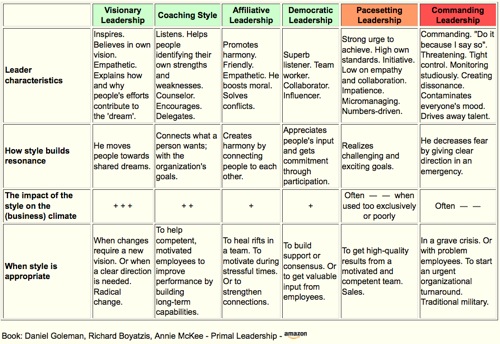

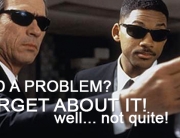
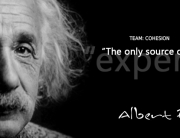
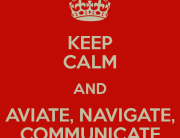
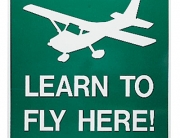






















[…] In-Flight -TEAM Awareness (situational awareness; identifying threats and errors) -TEAM Management (leadership models & styles; managing threats and errors during flight) -TEAM Cohesion (Using all the available resources and personnel to ensure safety and […]
Another excellent post, JD!
I especially like your opening quote, and your comparison of Kirk vs. Krasinski. Very insightful! You have a good touch of humor to make your point as well, similar to what I strive for in my blogs as well!
If you don’t mind, I’m going to link this to a post I did on May the 4th, highlighting a few of my “favorite sci fi and cinema captains.” Of course, James T. Kirk takes the prize, hands-down!:
http://capnaux.blogspot.com/2013/05/interlude-may-fourth-be-with-you.html
Eric
Thank you once more Cap’n! Kirk is definitely one of my most beloved “Captains” of all times, but let’s not forget Malcolm Reynolds, the infamous yet hilarious Space Cowboy and Captain of the Serenity! And as you said, humor and a little bit of story telling is always the best way in my opinion to share my thoughts!
This post was inspired by a shorter one I read earlier on, and had gotten me thinking about this dual requirement of our job. Glad you enjoyed it!
[…] your team (Leadership, Cohesion, […]